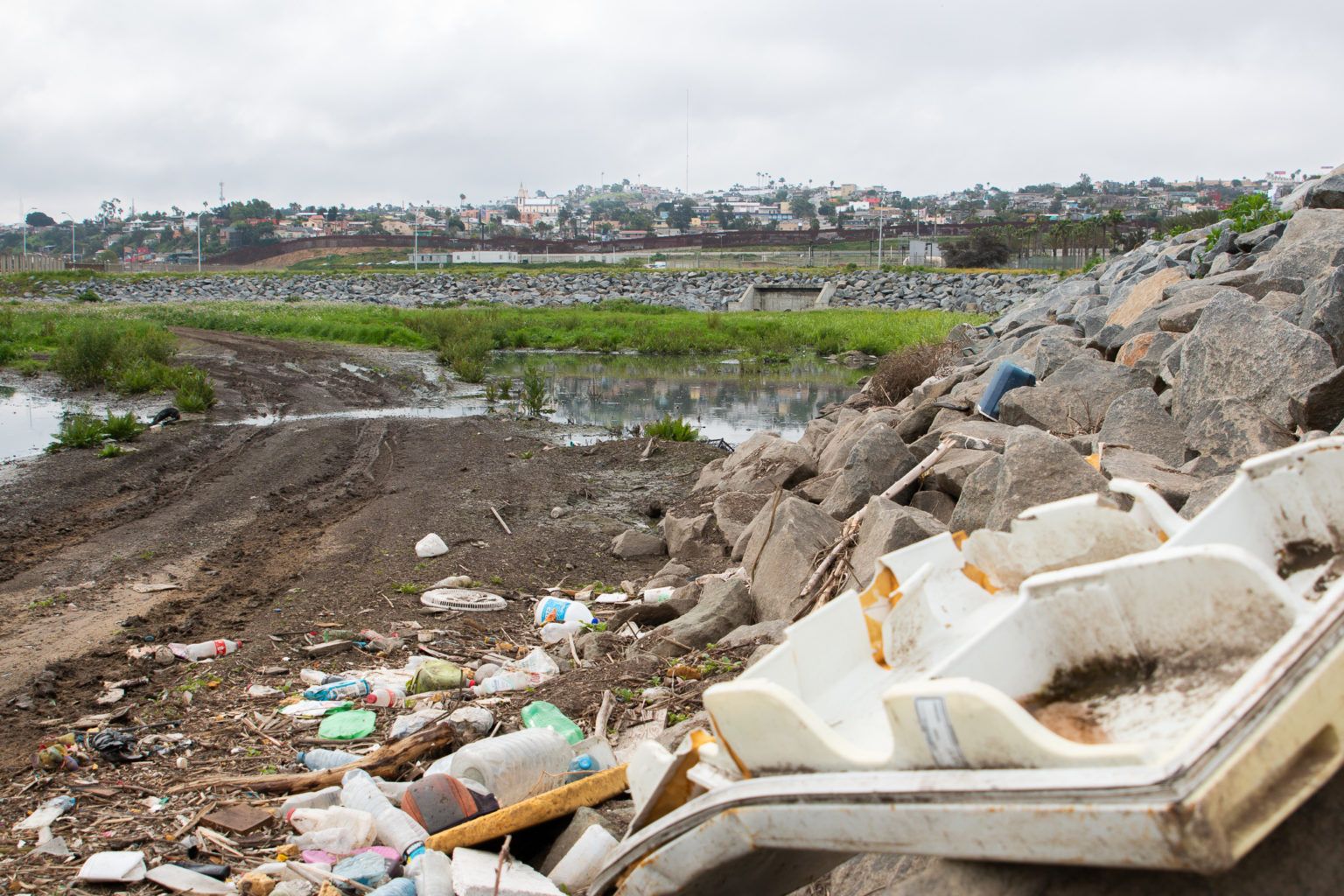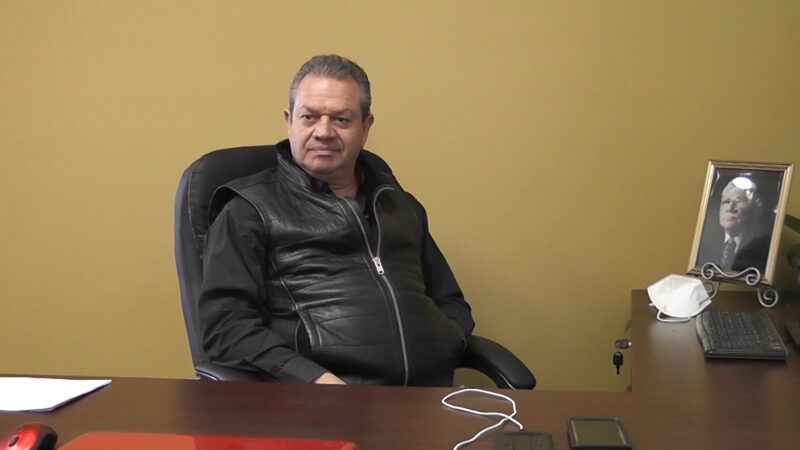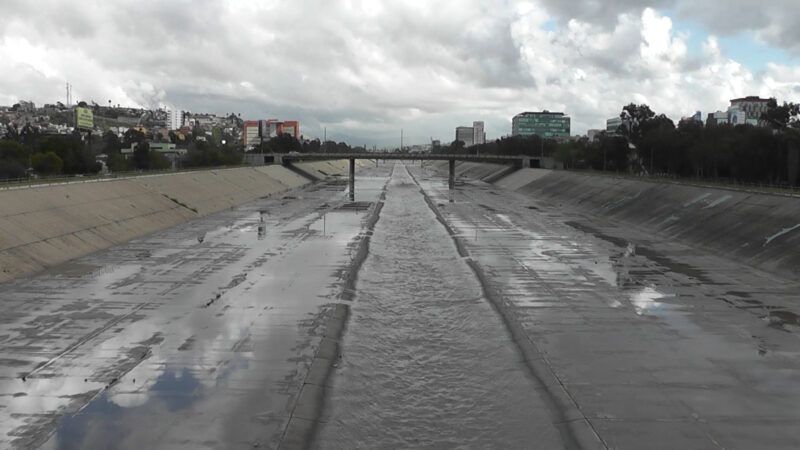On a stormy day, 1 billion gallons of water can rage down the river crossing from Tijuana to San Diego.
None of that water is captured for reuse now among the two desert cities it splits, which are regularly prone to drought, because it’s considered polluted by sewage spills on the Mexican side. If successfully recycled, that water could prove to be valuable as the Southwest grows more water-uncertain due to climate change.
Even so, the occasionally raging river is starting to turn heads in the private sector from companies that’d like to own the water, treat it and sell it back to a government or other thirsty buyers. To get there, it might take securing rights to the water from the state of California or, possibly, a new international agreement.
But the Mexican government says the water is theirs, at least, before it crosses the border. And they’re exploring what to do with it.
Who needs water from the Tijuana River the most, and who could take it in a region ruled by complex international treaties?
It’s Mexico’s Water, Sort of
If you ask the International Boundary Water Commission, a binational body that enforces border water treaties, the water spilling over the border is Mexico’s. But that’s only true for about 25 million gallons per day the commission can treat at the South Bay International Wastewater Treatment Plant, a facility on the U.S. side, which is often dirty water diverted from the concrete-covered river channel in Tijuana.
“Mexico has the right for it to be returned to Mexico,” said Sally Spener, foreign affairs officer at the commission.
If Mexico wants that water back, it has to pay. It’s already paying to treat it twice in Mexico, again at the international plant and to transport sludge left over from treating the water across the border.
“We treat it, to dump it, to treat it again and spend 100 million pesos ($5 million) a year,” said Rigoberto Laborín Valdez, the undersecretary of sanitation and the protection of water in the Mexican state of Baja California.
But Mexico doesn’t take it back.
Instead, the somewhat-clean water is then dumped into the Pacific Ocean via a five-mile pipe along the seafloor.
Private water recycling companies say that’s a waste.
“Once that water is treated and cleaned up, it’s worth $1,000 to $1,500 per acre foot. Trash becomes treasure,” said Kurt Tetzlaff, president of WinWerks, a San Diego-based company that pitched a Tijuana River wastewater recycling project.
That 25 million gallons treated at the international plant only accounts for a quarter of the water spilling over the border during one of those stormy, billion-gallon days. Millions more trickle and drain naturally as stormwater from Tijuana’s high canyons into the U.S. floodplain below, part of a nearly six-square-mile natural watershed.
Once that Mexican water hits U.S. soil, its citizenship changes, in a sense, and becomes California water.
The Legal Path to Reclaiming Water in the U.S.
Once it’s California water though, the legal questions a company or government would have to answer before being able to recycle it start to pile.
What makes this ever more complicated is the fact that because the water gets polluted in Mexico, the United States doesn’t know what’s in it. So a local U.S. government, the state or feds or even a private company could take on the task of treating it, but they also take on the liability should their water treatment strategy fail to pass strict U.S. water quality standards.
“It’s a whole different ballgame,” said Juan Guerreiro, assistant director of San Diego’s Public Utilities Department. “There’s a lot of resistance to reclaiming that water and that goes back to the U.S. having no jurisdiction over what’s being discharged into the watershed.”
Neither the U.S. nor Mexico knows exactly what’s being dumped in the river. Even though Mexico has good water law on the books, there’s little enforcement.
“We have a road with stop signs, but not police,” said Laborín Valdez, the Mexican sanitation official.
The city of San Diego, for instance, has a robust industrial waste monitoring program with more teeth.
“We go out and monitor who’s dumping what into the system. That’s important,” Guerrerio said.
The federal government could step in to curb pollution. Andrew Wheeler, President Donald Trump’s appointed director of the Environmental Protection Agency, publicly hailed that the U.S. negotiated for more “enhanced enforcement mechanisms” to tackle environmental problems in the U.S.-Mexico-Canada Agreement during a visit to San Diego last year to discuss the Tijuana River sewage problem.
Both the USMCA and its 20-year predecessor, the North American Free Trade Agreement, lay out a path for countries to dispute and penalize each other over problems that affect trade. Trump’s USMCA does, for the first time, include environmental violations under that category but neither country has used this new political sword in the context of cross-border pollution.
San Diego was treating Tijuana River water until 2000. Under a treaty agreement in 1965, the two countries built a pipeline so Tijuana could send its wastewater to San Diego’s South Bay Wastewater Reclamation Plant, which eventually shot that water into the ocean via Point Loma’s wastewater facility further north.
That was only supposed to be used in emergency situations, for instance when there was too much water for Tijuana to handle on its own. But because that wasn’t a long-term viable solution, the federal governments decided to build the international treatment plant, Guerreiro said.
Even if San Diego wanted to try and recycle the water itself and add it as a local water resource, it couldn’t. That’s because all the federal and state permits require knowing first what’s polluting it.
“There’s greater uncertainty because there’s no guarantee that we can have any influence over what type of water shows up at our facility,” Guerreiro said.
There’s a third option. But it’s never yet proven successful for a cross-border water deal.
A water company could get a presidential permit, which gives the U.S. secretary of state power to OK a project connecting the United States and a foreign country. The federal office granted such a permit back in 2017 to a failed project that would have brought desalinated ocean water originating in Rosarito, Mexico, to the Otay Mesa water district on the U.S. side. But politics came into play and the current Baja governor, Jaime Bonilla, canceled the project, claiming it would cost Mexican taxpayers too much.
Tijuana’s wastewater could be treated in the United States for resale in either country, but it would still likely need to meet water quality standards under both U.S. state and federal law, said Dave Gibson, executive officer of the California Regional Water Quality Control Board’s San Diego branch.
But in order to meet those standards, Tijuana would need a better system that’s proven to effectively pre-treat the water, meaning the city monitors and tests for any industrial polluting or sudden toxic dumps like San Diego’s program.
“It’s really quite unclear that there’s a pretreatment program that’s actually working,” Gibson said.
There’s actually a fourth option, and that’s Tijuana deciding it wants to recycle the river water before it even reaches the United States.
What Happened to Tijuana’s Decades-Old Water Recycling Plan?
Baja California is already contemplating how it might recycle Tijuana River water, an idea officials say is not new. Reuse is on the list of possible solutions to the border spills, but way below other priorities.
Projects like Echoparque, or Echo Park in English, promote the benefits of reutilization of sewage water. Launched in 1986 by The College of the Northern Border, a government-funded think tank, its mission is to contribute to local sustainability, environmental education and its own treatment plant of “dirty” water.
But even the experts who work at Echoparque acknowledge progress is not very solid.
“Reuse in Tijuana is below 3 percent,” said Gabriela Munoz-Melendez, a professor of energy, climate change and air quality at the college and one of the scientists running the program, which is located in one of the hills where effluent water flows on its way to the Tijuana River’s channel. (For reference, only 8 percent of the water in San Diego County is recycled, and 2 percent more is recycled to a point suitable for drinking.)
In 2018, the state signed a contract with an Israeli company to treat part of Tijuana’s sewage and sell the cleaned water to irrigate Valle de Guadalupe, which is known for its vineyards. But that plan has not yet materialized either.
Previous administrations in Baja touted “purple projects,” named for the purple pipe that reused water often runs through, like using water from two of the main water treatment plants in Tijuana for parks and landscaping. But progress was limited.
The new administration under Bonilla reshuffled the state water agency, the State Public Utilities and Services Commission of Tijuana, and created a new position with an emphasis on sanitation. That’s Laborín Valdez, who is in charge of water treatment and reuse for the state government. Laborín Valdez said for years a lot of people have come up with ideas and proposals for treating and reusing water, but feasibility is another matter.
In the Tijuana watershed, “all the water goes into Imperial Beach. How are you going to stop that when it rains? It’s a river, for god sake,” Laborín Valdez said.
He has decades of experience in the private sector with his own company that builds water treatment plants. As the head of the new water authority, he said economic and bureaucratic obstacles are difficult to overcome for Mexican government agencies.
But his sights are still set on recycled water as one of the options to deal with border spills and Tijuana’s water problem.
He said water recycling projects that were proposed by private companies like WinWerks and a subsequent Mexican conglomerate called Comice were already well-known to his agency and that the agency itself proposed a recycled water study about 10 years ago. He said it’s something he’d like to revive during his tenure.
Laborín Valdez said Mexico is adamant that the Tijuana River water is theirs and reusable but there’s simply no concrete path to do so. Yet.
So there’s all this water and everyone wants to treat it. “The question is, who needs it?” said Tetzlaff, president of the private U.S. recycling company.
Who Needs Tijuana River Water?
Tijuana probably does. The city emerged from a year of water rationing in December. Residents’ water was shut off every nine days.
The reason? Officials said it was needed to protect the levels of one of Tijuana’s main reservoirs from dropping too low. It and Tijuana’s other reservoirs are filled with Colorado River water, pumped more than 100 miles from Mexicali. That river, originating in the Rocky Mountains, provides 90 percent of the city’s water.
It’s an increasingly precarious resource for the over 40 million people it quenches, which include the cities of San Diego and Los Angeles, as long-term climate change threatens to destabilize the regular snowpack that feeds it. A 2004 study noted that Tijuana uses over 40 times its natural surface and groundwater flows, and the population has only exploded since then fed by the city’s building boom known as “vertical housing,” where developers are adding very tall apartment and office structures at a rapid rate.
“Water is so expensive and needed in Tijuana, the priority for (the Tijuana River water spilling over the border) should be the city,” said Gabriela Muñoz, director of the Department of Urban Studies and Environment at The College of the Northern Border.
“If you take resources from a poor place, don’t expect that you’re going to be respected,” Muñoz said of the Mexican government should it permit the United States to take the Tijuana River water. “Don’t go and steal. Go in and invest” in the communities, Muñoz said.
Like Tijuana, San Diego is highly dependent on water from the Colorado River. The San Diego region gets 69 percent of its water supply from a source also transported hundreds of miles via a series of canals and pipelines.
But San Diego is spending billions to diversify its local water supply in an effort to wean itself off the Colorado River. Water managers say there’s plenty of supply in San Diego, however, because demand has dropped.
Over the drought-ridden last five years, California issued mandatory reductions in water use, which pushed down water demand, and some of those habits (like transitioning to desert landscaping instead of watering a lawn) have stuck, meaning the region is consuming a lot less water on a regular basis.
“For developers, that means there’s more water available to them since we’re more reliable than we were before,” said Jeff Stephenson, a water resource manager at San Diego County Water Authority.
The Tijuana River isn’t counted in the agency’s most recent long-term water management plans.
“While we’re supportive of efforts to find solutions to challenges in the Tijuana River Basin, we are not directly involved in transborder sewage issues,” said Dan Denham, the Water Authority’s deputy general manager, in an email. “In the long term, if additional binational supply development opportunities make sense for the region, we would consider those possibilities in our regional supply mix.”
Mexico actually offered the treated water to the United States in 2017 if the U.S. helped pay for fixes and upgrades to its broken wastewater system, but nothing ever came of that proposal.
Spener, from the commission, said it would require a new binational agreement.
One of the first treaties ratified by the commission in the 1940s governed water allotments from major source rivers like the Colorado River and Rio Grande, but it stopped short on the Tijuana River, instead indicating that issue should be studied.
“We never made a recommendation for how to divvy up the waters of the Tijuana River,” Spener said.
Spener thinks the reason why is that the “stakes weren’t as high” then to allocate water from the seasonally dry river. The stakes have changed.
While San Diego feels secure about its water supplies, Tijuana is struggling to support itself. Like it or not the two are deeply tied, both culturally and economically as one border region. The troubled Tijuana River symbolizes a shared problem and what happens when policy fails to address the quality of life on both sides.
It’s a problem that will only grow worse as climate change progresses, bringing swifter and harder rainfall and more unpredictable heat waves and drought.
“This issue in Tijuana has been a long-standing issue, in my humble opinion, the solution is easy,” wrote Irasema Coronado, a professor at the School of Transborder Studies at Arizona State University and former executive director of the Commission for Environmental Cooperation, an international organization through which the North American countries can solve environmental problems, in an email.
“Fix the water, sewer and stormwater infrastructure, expand the wastewater treatment plants in Tijuana. Problem is lack of funding and political will,” she wrote.
This story was supported by the Pulitzer Center and The Water Desk at the University of Colorado, Boulder.


